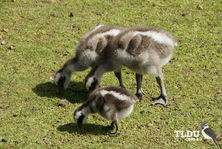
Shoppers Feedback:
Jan 17, 2017
Hello Ros,
I have now paid the invoice, but I would like to write to you just to say a big THANK YOU for getting me the Penguin!
The ChatterMate Penguin became a nice memory for me when I was in New Zealand, and I am so greatful to you for arranging so that I could have it! :-)
Thank you so much!!!!!!!!!!!
Regards,
Malin
Hi Ros,
Many thanks for your very kind email. I really appreciate your prompt reply!
I appreciate your advice regarding the decorations and customs. These are a gift for my daughter’s exchange student family so when she returns home on the weekend I will show her and see if she loves them as much as I do!
Thanks so very much again - I am truly grateful for your kind assistance.
Kind Regards
Bernadette
Ros,
Thanks again for the great customer service. It's a refreshing change!
Best regards,
Trevor
Hey Roz,
Thank you for your emails. Just loved my first order. The cute little Aussie bush critters are going to be used for an office Christmas decoration. My colleagues also liked them and talked about making an order to your site. I'll send you a photo when completed.
I'll be ordering more to send to my daughter's host family in America.
Fabulous service from you.
Kind regards,
Michelle
Thankyou. Order arrived today. One very happy grandson with his new beastly binoculars.
Regards,
Irene
- Home
- Wild Wonders
- Shop
- Aromas of Australia
- Australian Made
- Books
- Book Marks
- Christmas Decoration Sale
- Christmas Decorations
- Clocks
- Drink Holders
- Garden & Outdoor
- Gift Wrapping & Cards
- Home & Giftware
- Jewellery
- Keyrings
- New Products
- Pencils & Pen Holders
- Photo Frames
- Plush Toys
- Plush with Sound
- Sheepskin Rugs
- Stationery
- Stone Carvings
- Toys & Games
- Travel Goods
- Wedding
- Wild Figurines
- Wildlife Safety Products
- Wind Chimes
- Wine Charms
- View All Products
- Wildlife
- Australiana
- Explore
- Contact Us

Quick Facts
| Length: | 87 cm |
| Height: | - |
| Weight: | - |
| Colour: | Pale grey with dark spots across the wings. Pink to deep red legs and black feet |
| Habitat: | Offshore islands usually granite, areas of pasture, tussock grass or low scrub |
| Food: | tussock grass, spear grass, herbs and succulents. Pasture grass including barley, clover and legumes |
| Predators: | - |
| Status: | Vulnerable in VIC & NSW. Rare - SA, Secure - WA, Not Present in NT & QLD |
The Cape Barren Goose is a very large, pale grey goose with a relatively small head. Its stubby triangular bill is almost concealed by a very prominent greenish-yellow cere (skin above the bill). It has rows of large dark spots in lines across the scapulars (shoulders) and wing coverts. The legs are pink to deep red and the feet black. In flight it shows dark wingtips and along the trailing edge of the wings. It is also known as the Pig Goose.
The Cape Barren Goose is found on the south-eastern coast of Australia, the southern coast of Western Australia and in south-eastern Victoria. It is locally dispersive and has been introduced to Kangaroo Island.
The Cape Barren Goose is found on offshore islands, usually granite, in areas of pasture, tussock grass or low heathy scrub.
During the summer, the non-breeding geese generally leave the islands for the mainland where they feed on improved pasture.
The Cape Barren Goose is able to drink salty or brackish water, allowing many of them to remain on offshore islands all year round.
The Cape Barren Goose is a grazing bird, eating predominantly the common island tussock grass, Poa poiformis, as well as spear grass and various herbs and succulents. They also eat pasture grasses, including barley and clover, and legumes.
The Cape Barren Goose lays eggs in a nest in the tussocks of open grasslands. The nest is built by the male and lined with down. Each pair establishes a territory in autumn, prepares a nest and defends it noisily and determindly against other geese. This species is monogamous, and pair-bonds are life-long. The female incubates the eggs, and the young are brooded by both parents equally.
By the 1950s, numbers of the Cape Barren Goose were so low that biologists feared they may be close to extinction. Various initiatives have been taken which have increased the goose population to a level where they are no longer considered to be in danger. However they remain one of the world's rarest geese.
Last Updated: Wednesday 8th January, 2014
BUSH e-TELEGRAPH
Signup for our monthly newsletter the "e-Telegraph"
Quick Links
Home | The Beginning | About The Land Down Under | Wild Wonders | Advertise on Wild Wonders | Christmas Decoration Sale | Christmas Tree Decorations | Drink Holders | Plush with Sound | Stone Carvings | Wildlife Wine Charms | Freebies | Australian Wildlife | Help Our Wildlife | Australiana | Photo of the Month | Explore The Land Down Under | Contact Us | Legal Notices

